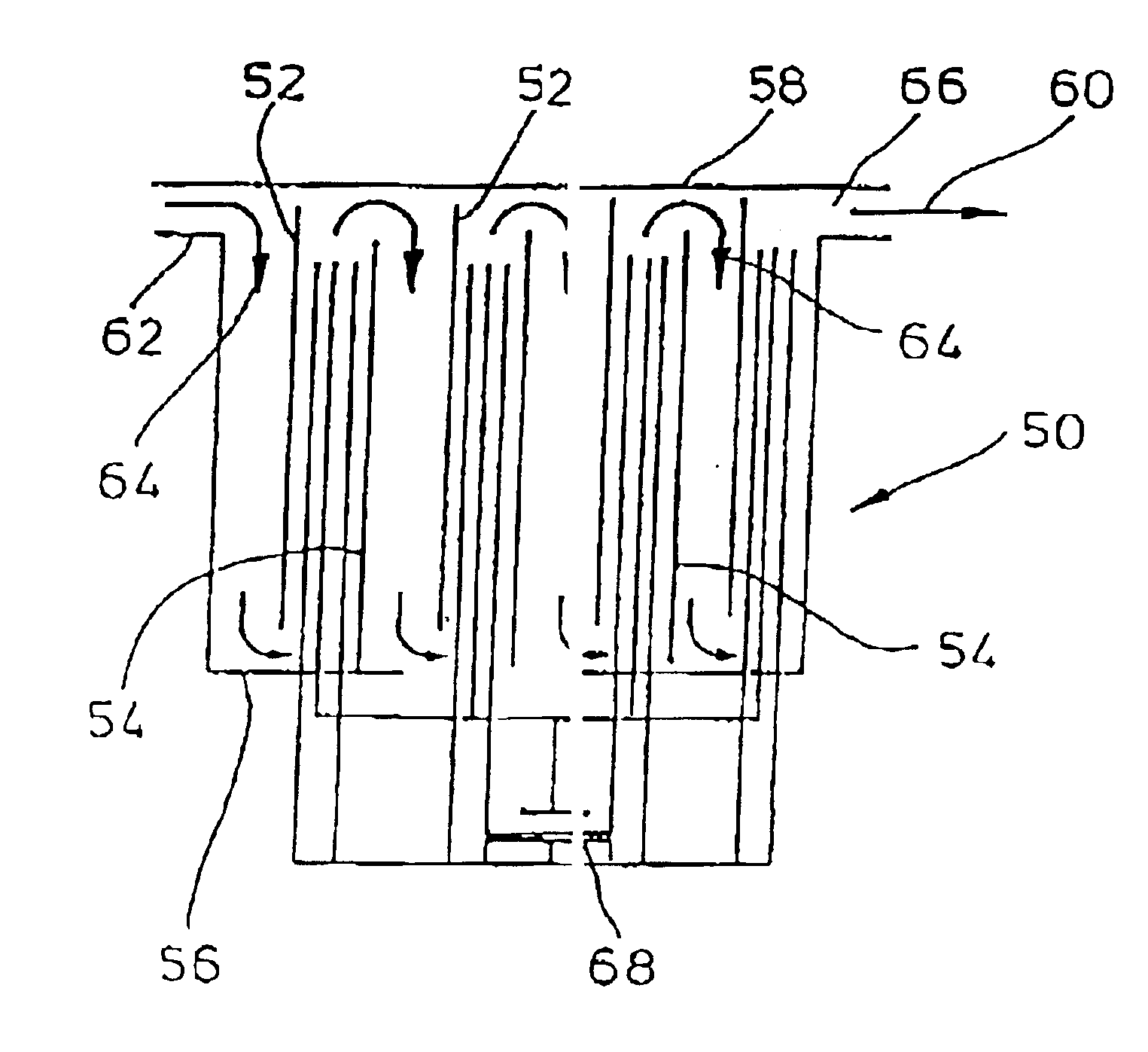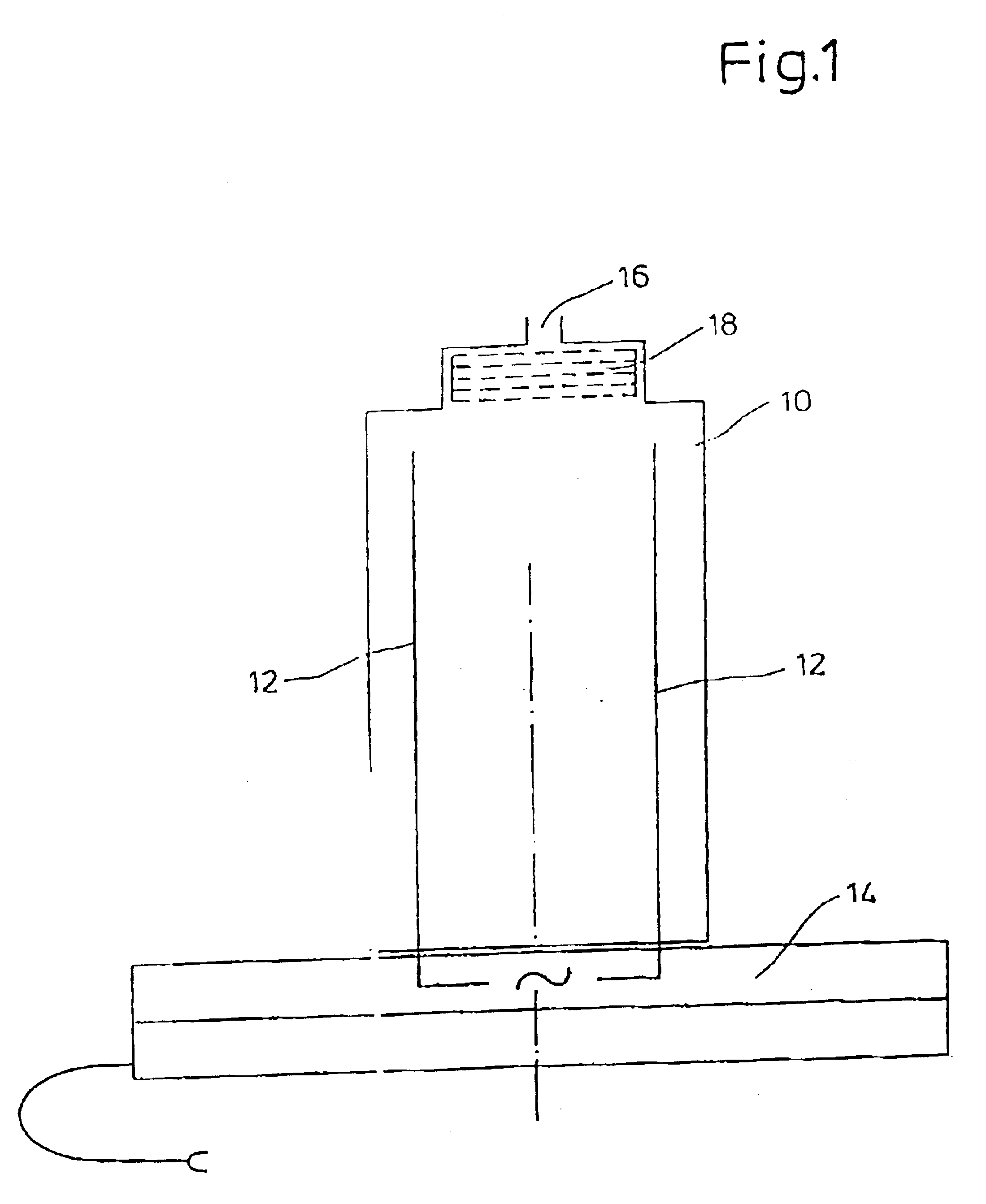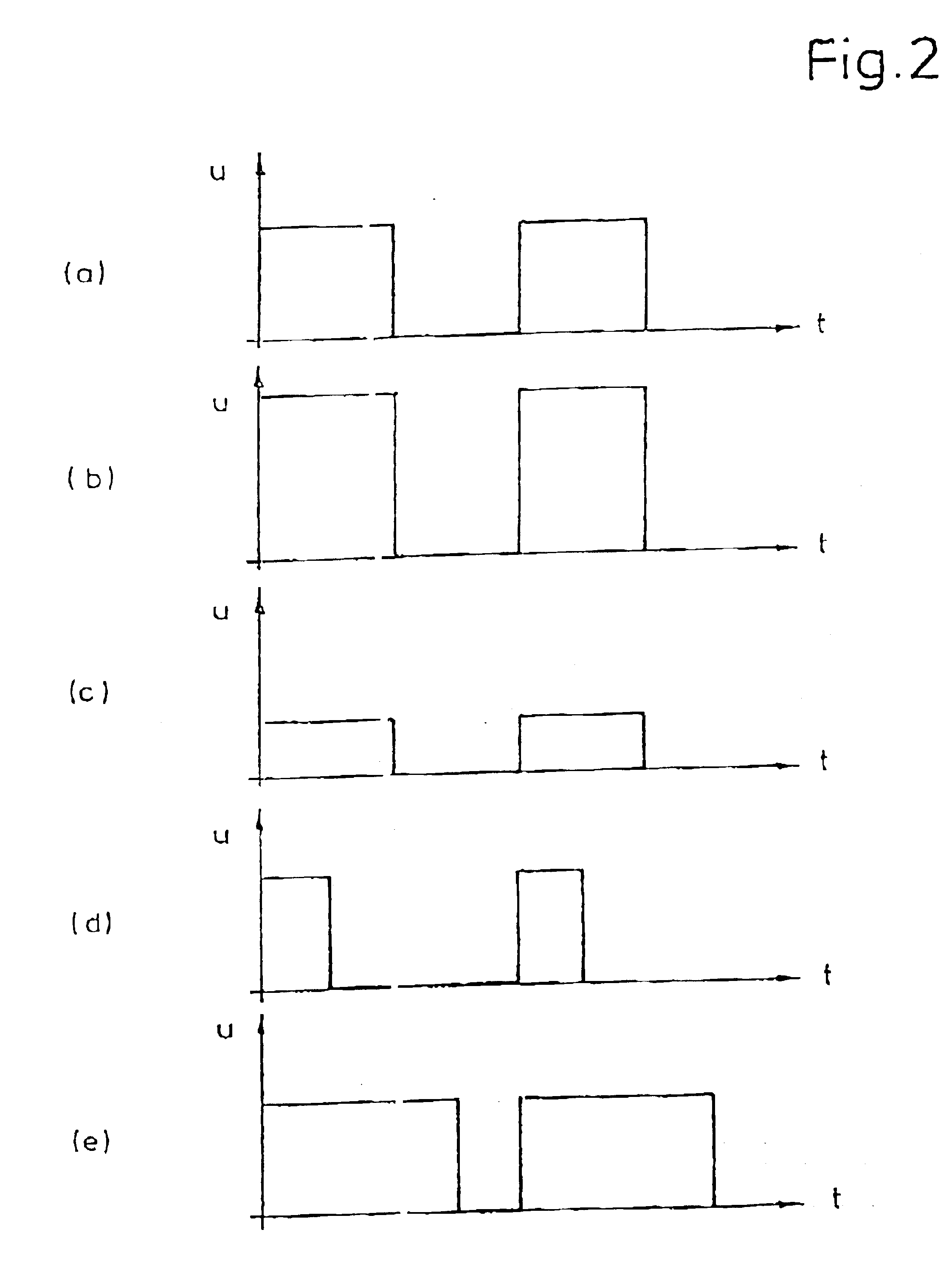Device for treating water
a technology for water treatment and devices, applied in the direction of electrostatic separators, material analysis, machining electric circuits, etc., can solve the problems of unsuitable portable devices, organisms often proved inadequate, and based solutions for water quantities to be treated, so as to reduce risk, short treatment time, and flexible
- Summary
- Abstract
- Description
- Claims
- Application Information
AI Technical Summary
Benefits of technology
Problems solved by technology
Method used
Image
Examples
Embodiment Construction
of dimensions of approximately 10×100 mm and are triggered by a current (direct or alternating) in the range between 20 and 100 mA, preferably 20 mA.
BRIEF DESCRIPTION OF THE DRAWINGS
[0029]Further advantages, features and details of the invention arise from the description below of preferred examples of embodiments and from the drawings which show:
[0030]FIG. 1: a diagrammatic side view of the device according to the invention for water treatment;
[0031]FIG. 2: various signal form diagrams (as functions of the signal voltage over time) of the alternating signal to be introduced via the electrode arrangement into the water quantity to be processed, and
[0032]FIG. 3: a further embodiment of the present invention.
DETAILED DESCRIPTION
[0033]As shown diagrammatically in FIG. 1, the device according to the invention for the treatment in particular decontamination of water with the purpose of producing drinking water, consists of a cylindrical container unit 10 in the interior of which is provi...
PUM
| Property | Measurement | Unit |
|---|---|---|
| frequency | aaaaa | aaaaa |
| frequency | aaaaa | aaaaa |
| diameter | aaaaa | aaaaa |
Abstract
Description
Claims
Application Information
 Login to View More
Login to View More - R&D
- Intellectual Property
- Life Sciences
- Materials
- Tech Scout
- Unparalleled Data Quality
- Higher Quality Content
- 60% Fewer Hallucinations
Browse by: Latest US Patents, China's latest patents, Technical Efficacy Thesaurus, Application Domain, Technology Topic, Popular Technical Reports.
© 2025 PatSnap. All rights reserved.Legal|Privacy policy|Modern Slavery Act Transparency Statement|Sitemap|About US| Contact US: help@patsnap.com



